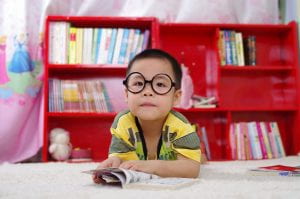ETL402 ~ Literature Across the Curriculum: Module 1

The value of children’s literature has changed substantially over time, you only need to look back through the history of children’s literature and how the content has evolved. The 17th Century saw works for children aimed at moral and spiritual behaviour and etiquette telling stories to children who were seen as small adults (Broomhall, McEwan, & Tarbin, 2017). Storytelling has become a ritualistic sharing time for adults and children, though still may contain a moral. Books for children have emerged in today’s society, into new genres, especially with the advent of new technologies (Wolf, 2014) and new trends in the influence of animation and visual culture and the limited availability of books reflecting the diverse nature of today’s world (Short, 2018).
So who influences these changes in literature? Is it the world, the society we live in, adults who select books (parents, educators or otherwise) or the children who are reading or sharing in them? Who are the drivers of change?
As a Teacher Librarian, I have seen the exponential rise in graphic novel borrowing and requests for more by students. With this comes the careful selection of this genre to ensure suitability for primary school-aged children. This is driven by student selection, and at the same time, the increased demand from readers has ensured authors and publishers are meeting this demand. Converting many loved books into graphic novels such as the Wings of Fire series (Sutherland) and fresh takes on classics such as the Babysitter club series. Along with other popular titles such as Bad Guys (Blabey), Dog Man (Pilkey), Amulet (Kibuishi) and Sisters (Telgmeier, 2014). Many of these have themes of fantasy, adventure or current issues. This being said, I think the biggest drivers of change are the readers themselves and their interest in the visual nature of the books, as a strong visual appeal keeps readers immersed and is central to their experience and interaction with the text (Short, K, 2018), with parents, teachers and other influential adults fostering the childs love of reading for enjoyment.
References
Broomhall, S., McEwan, J., & Tarbin, S. (2017, March 30). Once upon a time: A brief history of children’s literature. The Conversation.
Short, K. (2018). What’s trending in children’s literature and why it matters. Language Arts, 95(5), 287-298.
Wolf, S. (2014). Children’s literature on the digital move. Reading Teacher, 67(6), 413-417. https://doi-org.ezproxy.csu.edu.au/10.1002/trtr.1235
